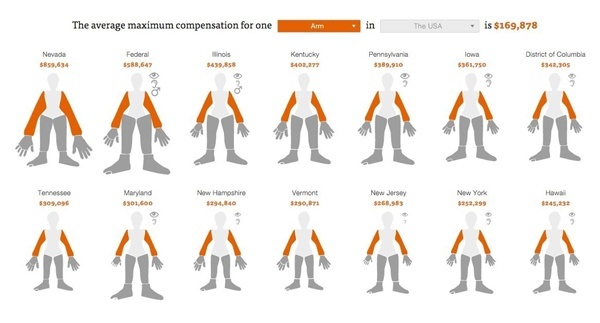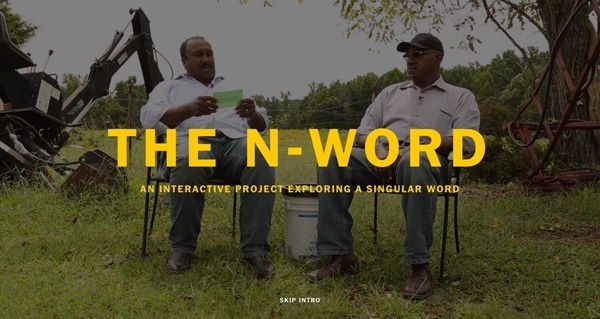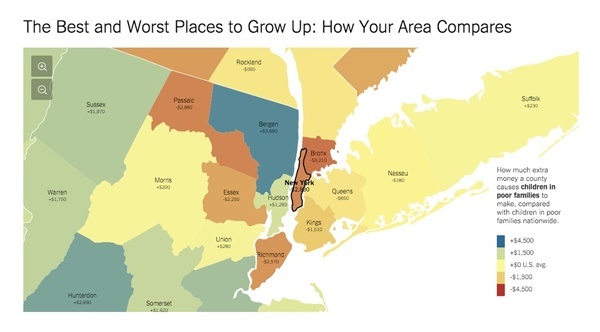
Now to personalize the flow of information
Why send the same news to everyone? Is that the best we can do? The more newsrooms know about their users as individuals, the better the service they can offer.
In Geeks Bearing Gifts, Jeff Jarvis writes that “knowing people as individuals and communities so we can better serve them with more relevance … will be a necessity for media business models, a key to survival and success.” But knowing your users is just the beginning. What news organizations do with that knowledge — the personal experiences they are able to deliver — is the critical thing.
Information is abundant and easily accessed and easily stored in today’s hyper-connected world. This makes it possible to offer custom products for each user or allow users to assemble their own personalized bundle.
Some popular services that are built on this principle:
- Google search results are customized to each user
- Facebook curates a different news feed for each user
- Amazon recommends additional items to each user
- Netflix suggestions are based on the profile of each user
These platforms are saturated with content — they assume a world of abundance — but by understanding their users on a personal level they manage to narrow the options and make choosing a more pleasant experience. By gathering and analyzing user data they can design services around user profiles, rather than mass generalizations.
A product that is better targeted to individuals is a superior service. It helps establish relationships and increase user loyalty. The payoff happens when someone has an “Aha!” moment because the service provides something new, different or unexpected. That’s a signal to users: you are saving them time in the hunt for relevant information.
To some degree, people with a social media profile or a smartphone have already built a personalized environment: they follow certain users, they download certain apps, they customize their experience just by using the device. Personalization is becoming a standard in the digital world, and news organizations will be left behind if they do not create a similar experience.
For an industry used to creating one product for everybody, however, embracing these practices has been a slow process. From a May 2015 Columbia Journalism Review article by Damaris Colhoun:
Even the savviest digital news natives are way behind Google, Facebook, and Amazon, which have been amassing data on users for years through demographic targeting. And the fact that modeling the news, predicting what a reader will click on or linger on next, is much more complex than modeling what book a user is likely to buy, doesn’t help.
There are some signs of progress — Colhoun points to journalists’ embrace of analytics and metrics to learn who their readers are — but there is a long way to go. Newsrooms need to design their services around user profiles that will provide the right content at the right moment in the right context. If they can do that, they may be able to charge real money for it.
News companies that are able to transform user data into unique experiences will become the most valuable. Sending everyone the same news was just a stage in the evolution of media. Journalists should welcome the opportunity to move beyond it.
Key quotes
Knowing people as individuals and communities so we can better serve them with more relevance ... will be a necessity for media business models, a key to survival and success.
If news organizations can deliver content to readers based on what they tend to consume, they may be able to make content so good that readers are willing to pay for it, as they do for Netflix.
Examples
Personalization through exploration
 ProPublica’s Workers Comp Benefits interactive
ProPublica’s Workers Comp Benefits interactive
By allowing users to pick which elements to explore or ignore, ProPublica helps people make their own observations from the information in its Workers Comp Benefits interactive. Rather than a journalist interpreting the data and crafting a narrative — although there is a related story, too — this project lets each user to come away with a personalized understanding of the topic.
Personalization through interaction
 The Marshall Project’s Cut 50 interactive
The Marshall Project’s Cut 50 interactive
To help readers grasp the complexities of criminal justice reform, The Marshall Project built an interactive and gives them an exercise: figure out how to cut the U.S. prison population by 50 percent. The accompanying story uses expert sources to explain how complicated this type of reform would be, but providing readers a way to experience the difficulty for themselves helps illuminate the challenge in a way the narrative simply cannot.
Personalization through curation
 The Washington Post’s N-Word project
The Washington Post’s N-Word project
Sometimes an experience can be personalized by highlighting certain elements of the entire story. This is what The Washington Post did with this piece, which asks users to pick three perspectives to explore and then creates a custom video by combining segments related to those choices. Though the personalization is more limited compared to other examples, the mix of user input and editorial judgement provides users with a curated product that simultaneously tells the intended story and speaks to users’ interests.
Personalization through automation
 The Upshot’s Best and Worst Places to Grow Up feature
The Upshot’s Best and Worst Places to Grow Up feature
This May 2015 feature from The Upshot is one of the more exciting examples of personalized news, as it presents unique graphics and modifies the text based on where you’re reading the story. It’s deep personalization that takes advantage of location and structure data to automatically customize an entire article to (presumably) be far more relevant to users.
Why is this important?
Providing users a unique experience that is customized to their interests and needs can build loyalty and add value — value that people might pay for.Killer links
- Columbia Journalism Review Is the news behaving more like advertising?
- Nieman Lab Consumers — not their devices — must be the focus of any content strategy
- Nieman Lab Who should see what when? Three principles for personalized news
- Journalism.co.uk How news sites are boosting ‘stickiness’ with personalization
- Jeff Jarvis Geeks Bearing Gifts: Mobile = Local = Me
People to follow
-
 Damaris Colhoun is a freelance reporter who covers the media.
Damaris Colhoun is a freelance reporter who covers the media. -
 Amy Webb is the CEO of a digital strategy consulting firm.
Amy Webb is the CEO of a digital strategy consulting firm. -
 Jihii Jolly is the co-founder of The Future Journalism Project.
Jihii Jolly is the co-founder of The Future Journalism Project. -
 Nikki Usher is an assistant professor at George Washington University.
Nikki Usher is an assistant professor at George Washington University.
Glossary
Users actively complete or select something — surveys, preferences, filters, etc. — that indicates what they want. “I am who I say I am.”
The system infers information about people based on location services, browser history, aggregation, and more. “I am who my clicks say I am.”
